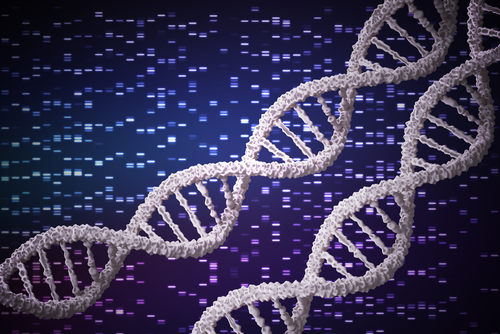Case Report Describes Patient with Unusual Symptoms of Spondylodysplastic Ehlers-Danlos Syndrome

Patients with spondylodysplastic Ehlers-Danlos syndrome with a specific mutation in the B4GALT7 gene may show hearing loss and lower limb swelling over other more common symptoms of the disease, such as specific radiographic abnormalities or intellectual disabilities, a case report shows.
The report, “Expanding the clinical and mutational spectrum of B4GALT7-spondylodysplastic Ehlers-Danlos syndrome,” was published in the Orphanet Journal of Rare Diseases.
Spondylodysplastic Ehlers-Danlos syndrome (spEDS) is a rare connective tissue disorder that occurs with unknown frequency and prevalence in the general population.
Patients with spEDS are grouped together clinically by the presence of a homozygous mutation in one of three genes — B4GALT7, B3GALT6, or SLC39A13. Homozygous mutations refer to when both copies of a gene are mutated, whereas heterozygous mutations occur when only one of two copies of a gene is mutated.
Patients with spEDS generally have two major symptoms — short stature and muscle hypotonia, or decreased muscle tone. They also have characteristic radiographic abnormalities such as radioulnar synostosis — a rare condition in which there’s an abnormal bony or soft tissue connection between the two bones of the forearm. Patients can also have mild to severe intellectual disability. Together, these are all considered hallmarks of spEDS.
For diagnostic purposes, patients must show the two major symptoms as well as three other minor criteria suggestive of an spEDS diagnosis. A definitive diagnosis, however, is only reached when genetic testing comes back positive for a homozygous mutation.
To date, only seven patients from six families have been documented with a confirmed spEDS diagnosis due to a mutation in the B4GALT7 gene,which leads to a deficiency of the protein β4Galt7 — a condition known as spEDS-B4GALT7.
Physicians in this study describe the case of a 30-year-old Moroccan woman with a novel homozygous B4GALT7 mutation.
The patient was born healthy, but had a progressive height deficit in infancy that was not related to a growth hormone deficiency. This, in combination with skin hyperextensibility and generalized joint hypermobility, led physicians to diagnose the patient with unspecified EDS.
At 28 years old, she exhibited low bone mineral density, which was found using dual-energy X-ray absorptiometry.
Furthermore, an audiometric test revealed that the patient had mild neurosensorial hearing loss. She also had lower limb edema (swelling), which has never been described before in spEDS patients. The patient, however, did not have radioulnar synostosis or an intellectual disability.
The clinical observations were suggestive of spEDS as the patient fulfilled two major and four minor criteria, according to the 2017 EDS classification. Therefore, she was screened for mutations in the B4GALT7 gene.
Genetic analysis revealed a previously undescribed homozygous mutation in the B4GALT7 gene (c.829G>T, p.Glu277 mutation). The patient’s parents and sister had a heterozygous mutation at the same location in the gene, but did not show any signs of the disease.
By identifying this novel mutation, “our findings expand both the clinical and mutational spectrum of this ultrarare connective tissue disorder,” the researchers wrote.
The team emphasizes that future studies are needed to further characterize the B4GALT7-related clinical manifestations. In particular, researchers need to determine the incidence of specific features, such as radioulnar synostosis or intellectual disability, to help physicians identify the signs and make an early diagnosis.






